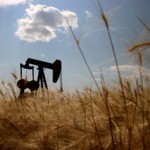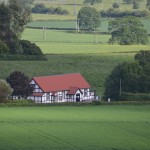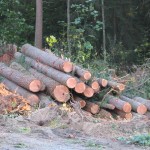Raw Land – Purchasing, Financing & Developing

Purchasing raw land is considered a long-term, illiquid investment. Even if you begin developing it immediately, it may take a long time before you reap any profits. Selling it fast is usually not an option.
What will you do with the land once it’s yours? Do you want to raise cattle? Build your dream home? Use it for a retirement investment? Or develop it so you can quit your day job? The cost of your raw land purchase isn’t the same as the sales price you pay. The sales price is only part of it.
You’ll want to determine the yield, or what you can get from the developed property. That will require additional outlays of money for property surveys, environmental impact studies, fees, permits, engineering services and soil tests.
Before you start the buying process, it’s best to determine exactly how you want to use the raw land and when you want to buy it. A little planning will help you choose the parcel that’s right for your stated purpose. For example, land purchased for hunting would require enough wildlife in the area. If purchased for fishing, you need to locate streams and lakes. If you want to use your raw land purchase for investment, at  what point will you consider your investment a success?
what point will you consider your investment a success?
Planning isn’t just for your benefit. It’s also important if you intend to apply for financing through your bank. The lender will want to know this information before granting loan approval. A development plan with blueprints can help to justify the loan.
APPLY HERE for a financing quote, or call us!
Although investing in raw land can be lucrative, there can also be a downside. Raw land cannot be depreciated and there are few tax advantages associated with it.
 There is also a risk of losing money on the resale of raw land. This is particularly true if you choose poorly or fail to fully evaluate the parcel. Unforeseen events such as a slowing economy can also affect your sales price and how fast you can sell it.
There is also a risk of losing money on the resale of raw land. This is particularly true if you choose poorly or fail to fully evaluate the parcel. Unforeseen events such as a slowing economy can also affect your sales price and how fast you can sell it.
Negative cash flow can be a problem. Investors sometimes find that they owe more for the land than they are able to generate as income. Others plunge in head first, spending more than they can possibly get in the resale.
Banks consider raw land purchases to be speculative investments. They often generate little income and the cost of development can be high. If is often better to see if you can get financing through the property seller. Typically they will accept a lower down payment and provide financing at a lower interest rate. An alternative mortgage is another potential option.
Value is sometimes hard to determine, although there are some sure factors that affect it. For example, an oddly shaped parcel that makes development challenging can be a detriment. So be careful to review the exact size, shape, width and depth of the property you are considering.
Location is a top factor. Corner lots with easy access to roads and parking are prime candidates for development. Easy access to sewers, drinking water, natural gas, electricity and telephone service should also be considered when selecting the location of your raw land purchase.
Trees add value to your land, as do streams. In fact a stream on your property can increase its value by as much as 100 percent in some cases.
Good drainage is important, as well as contour and grading. A good view, however, can be a double-edged sword. It can add value, but also be costly when you develop the land. You could pay up to 30 percent more for roads, utilities, water, sewer and building foundations when you develop land high up on a hill.
And of course the environment affects value. Climate, air quality, water supply and the presence of hazardous materials can help determine the worth of your raw land.
The raw land may look beautiful, but be sure to search for problems hidden beneath the surface, literally. Buried toxic waste in leaking underground storage tanks, old wells and septic systems, underground pipes and cemeteries are all potential problems. And while you might see the rocks above-ground that need to be removed, you might not see the huge boulders lurking below that could prevent you from digging a basement for your new home.
If your land parcel is close to a river or stream, do your homework to make sure it isn’t part of a flood plain. You’ll also want to check with the  area government to ensure there aren’t any unknown moratoriums on the books that prevent development of your land at all.
area government to ensure there aren’t any unknown moratoriums on the books that prevent development of your land at all.
No matter how you intend to develop your raw land, you’ll want to know it has the basic necessities and a comfortable environment. Smells from landfills or other industry could dampen the fun at your water park. Noise from airports or traffic might compromise a gated subdivision. And trash cluttering the land would definitely ruin the ambiance of your weekend getaway.
If there isn’t a power plant within a reasonable distance, you will have to pay the cost of running cables across public lands to get hooked up. Depending on your financial resources, this could be a deal breaker. Be sure to call the utilities and find out before you buy.
You’ll also want to know if there is sewage disposal or if a septic tank is required, and whether there is trash pick-up or must other arrangements be made. Other important services include police and fire protection, hospitals, schools, churches and mail delivery.
And once you’ve determined that your property has potential worth, you’ll also have the actual development costs. These can include tree  removal, grading and clearing, the building of access roads, payments to bring utilities to your land and expenses involved with drilling a well or installing a septic tank.
removal, grading and clearing, the building of access roads, payments to bring utilities to your land and expenses involved with drilling a well or installing a septic tank.
Before you buy, make sure you have the financing to cover the sales price and beyond. Lenders usually won’t lend you more than 50 percent of the land’s purchase price. So, you might consider part-seller and part-bank financing.
Getting up close and personal with your potential raw land purchase is a good idea. Pick up a survey of your land and walk it to locate ponds, streams, trails and fence lines. Take photos and find the boundaries of your property. Be sure to look for any signs of hazardous waste.
 Research the area. Is it growing or losing population? Talk to regional development agencies to get information about development forecasts, planned roads, utility extensions and building costs. Also look at the land parcels around you.
Research the area. Is it growing or losing population? Talk to regional development agencies to get information about development forecasts, planned roads, utility extensions and building costs. Also look at the land parcels around you.
Research your land. Find out what the land last sold for and check with area zoning departments to verify how your property is zoned. If it is zoned agricultural, what crops can be grown and what livestock are allowed? If it is residential or commercial, find out if there are restrictions regarding the types of buildings allowed.
Before you invest your hard-earned cash, make sure you like everything about the land and that there aren’t any reasons you wouldn’t want to buy it.
The seller knows the property best and is a great source of information. Ask her how long she’s owned the property, why she’s selling it and about other key issues, such as taxes and financing options.
Visit with the neighbors. Ask them questions about the property and what they like and dislike about the area. Doing so will also allow you to get to know them so you can determine if they’re the kind of neighbors you want to be around.
Timing can be everything when developing raw land. Changing demographics, a shaky economy or other uncontrollable factors must be weighed. Building a new apartment complex when there is a housing surplus doesn’t make sense. Nor does spending money to develop your parcel when already-developed land is easily available at a lower price.
If you already own the land, it might be best to wait until there are changes in the market or the economy picks up before developing. If you haven’t yet made your raw land purchase, be willing to walk away if the time isn’t right. Don’t get so attached to your land parcel that you make the wrong move. There will be other days — and other parcels — available.



